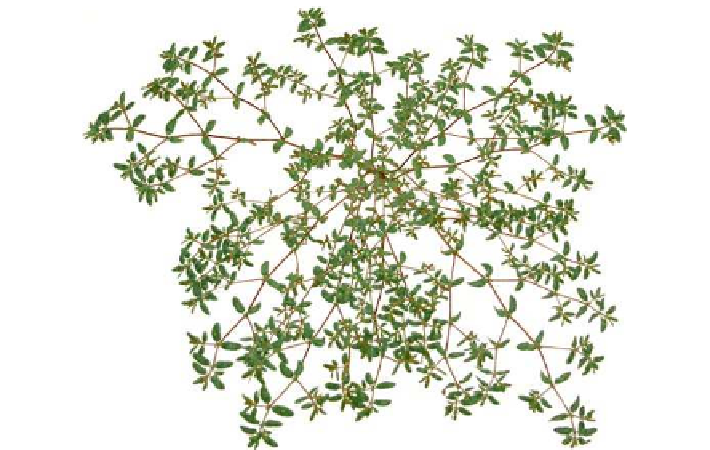Graphics Reference
In-Depth Information
Figure
.
.
A rooted tree, otherwise known as Knotweed (Polygonum arenastrum). Photo courtesy of
Bill Hosken
water distribution to the leaves and assumes leaves should be separated as much as
possiblesoastomaximizeexposuretosunlight.Figure
.
showsanexample.Given
a planar area for uninhibited growth and uniform sunshine, this weed has assumed
a shape similar to the web tree in Fig.
.
.
Laying out Large Trees
Laying out large spanning trees presents special problems. Even in polar form, large
trees can saturate the display area. Furthermore, the springs algorithm is computa-
tionally expensive on large trees.
One alternative was developed by Graham Wills (Wills
), motivated by the
hexagon binning algorithm of Carr (Carr et al.
). Wills uses the hexagon layout
tomakeedgescompactandimprovecomputationthroughbinning.Figure
.
shows
an example based on website resources (Wills
).
Additive Trees
Additive trees require rather complex computations. Weare given a (presumably ad-
ditive) distance matrix on n objects and are required to produce a spanning tree in
whichthe graph-theoretic distances between nodes correspondas closely as possible
to the original distances. Figure
.
shows an example from White et al. (
). he
gray rectangles highlight three clusters in the data. he article notes that the angles
between edges are not significant. he edges are laid out simply to facilitate tracing
paths.

